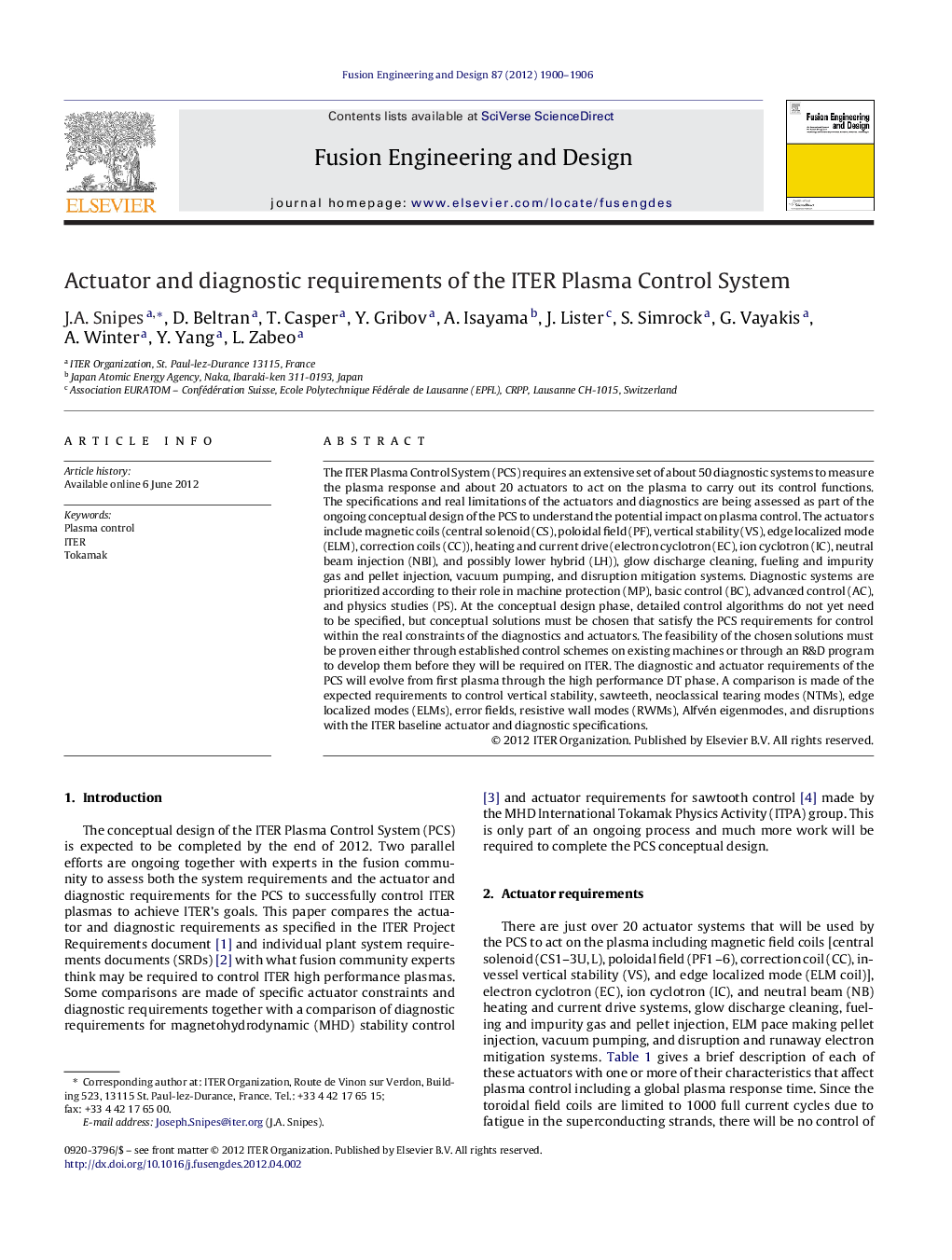| Article ID | Journal | Published Year | Pages | File Type |
|---|---|---|---|---|
| 271291 | Fusion Engineering and Design | 2012 | 7 Pages |
The ITER Plasma Control System (PCS) requires an extensive set of about 50 diagnostic systems to measure the plasma response and about 20 actuators to act on the plasma to carry out its control functions. The specifications and real limitations of the actuators and diagnostics are being assessed as part of the ongoing conceptual design of the PCS to understand the potential impact on plasma control. The actuators include magnetic coils (central solenoid (CS), poloidal field (PF), vertical stability (VS), edge localized mode (ELM), correction coils (CC)), heating and current drive (electron cyclotron (EC), ion cyclotron (IC), neutral beam injection (NBI), and possibly lower hybrid (LH)), glow discharge cleaning, fueling and impurity gas and pellet injection, vacuum pumping, and disruption mitigation systems. Diagnostic systems are prioritized according to their role in machine protection (MP), basic control (BC), advanced control (AC), and physics studies (PS). At the conceptual design phase, detailed control algorithms do not yet need to be specified, but conceptual solutions must be chosen that satisfy the PCS requirements for control within the real constraints of the diagnostics and actuators. The feasibility of the chosen solutions must be proven either through established control schemes on existing machines or through an R&D program to develop them before they will be required on ITER. The diagnostic and actuator requirements of the PCS will evolve from first plasma through the high performance DT phase. A comparison is made of the expected requirements to control vertical stability, sawteeth, neoclassical tearing modes (NTMs), edge localized modes (ELMs), error fields, resistive wall modes (RWMs), Alfvén eigenmodes, and disruptions with the ITER baseline actuator and diagnostic specifications.
► Present diagnostic and actuator specifications meet ITER PCS requirements. ► Actuator and diagnostic constraints restrict ITER's control and operation space. ► PCS design must optimize plasma control algorithms within realistic constraints. ► Scenario modeling must include controllers, actuator, and diagnostic constraints. ► Control algorithms must be validated on existing devices where possible.
